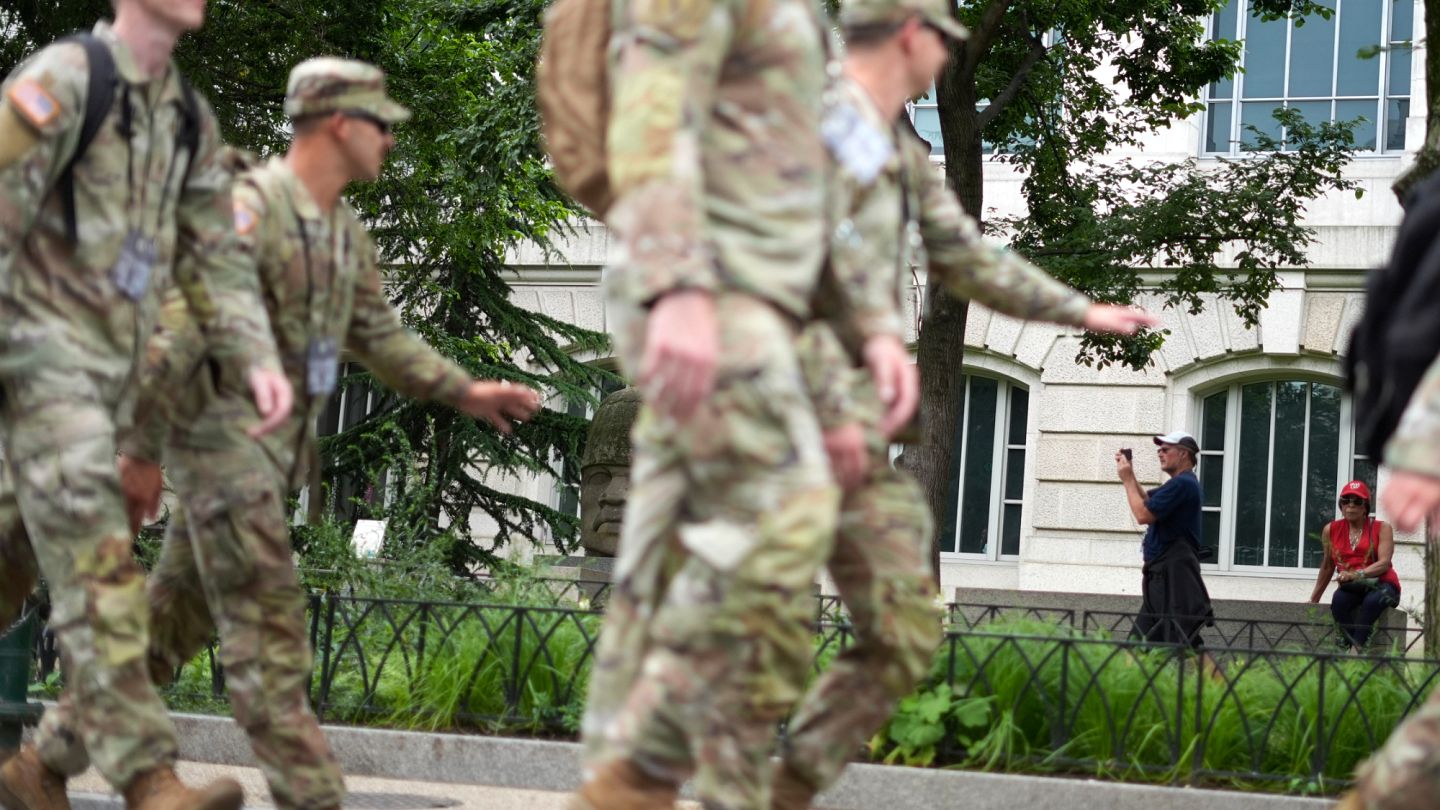The US military created a new army reserve body earlier this month that included four players from the biggest tech companies in the world. The Army’s new initiative – Detachment 201, called the Executive Innovation Corps to Drive Tech Transformation, will see senior tech executives serve as advisors to the military to “help guide rapid and scalable tech solutions to complex problems,” the army’s website reads. “By bringing private sector know-how into uniform, Det. 201 is supercharging efforts … to make the force leaner, smarter and more lethal”. (The US Army has issued an interest form since the four tech executives joined in the hopes of recruiting more tech executives to the detachment.) The first four reserve members are Shyam Sankar, Palantir’s chief technology officer, Andrew Bosworth, Meta’s chief technology officer, Kevin Weil, OpenAI’s chief product officer, and Bob McGrew, advisor at Thinking Machines Lab and former chief research officer at OpenAI.All four have been given the title of Lieutenant Colonel, a senior officer rank that often oversees battalions of between 300 to 1,000 people. Shyam SankarShyam Sankar claims he joined Palantir Technologies, an American company that trades in software platforms for big data analytics as “employee #13”. He said he brought the forward deployed engineer role to the company, a software engineer who works directly with clients to embed Palantir’s technology into its weapons. Sankar holds a bachelor’s in electrical and computer engineering from Cornell University and a master’s degree in management science and engineering from Stanford University. In 2024, Sankar wrote the “Defence Reformation,” a 4000-word “treatise” that lays out how he believes the US should reform its military, including ways to introduce more competition into a defence tech industry that he believes has been consolidated. “We are in [a] state of undeclared emergency,” he wrote. “For more than three decades, we’ve accepted a stagnant Defence Industrial Base … with no great power competition. “Change is now possible because we all realise there is something worse than change: irrelevance,” he said. Sankar’s swearing in to the military comes a few weeks after Palantir won a $795 million (€678.5 million) contract for its Maven Smart System software licenses. Earlier this year, the company also provided the US military with its first Tactical Intelligence Targeting Access Node (TITAN) systems, the first AI-powered mobile ground station to help soldiers with warfare strategy. Andrew BosworthBosworth, known in the tech community as “Boz,” joined Meta in 2006 when Mark Zuckerberg was ramping up the social media platform Facebook. Initially, Bosworth was Zuckerberg’s teaching assistant in an artificial intelligence (AI) class at Harvard in 2004. Despite rarely coming to his class, Facebook recruiters called Bosworth while he was working at Microsoft in Seattle, and the rest is history. The company credits Bosworth with creating the News Feed, where users often see recent posts from their friends and family, along with early “anti-abuse systems” that are still in place on the network. In 2017, Bosworth created the company’s first virtual reality (VR) division called Reality Labs, which he still leads. He also leads the company’s artificial intelligence (AI) efforts, called Meta AI, and Meta’s smart glasses technology. He said on X that he was “honoured” to join the US military because he is “deeply invested in helping advance American technological innovation”. Bosworth’s swearing in comes less than a month after Meta and US-based defence tech company Anduril announced a partnership to integrate extended reality (XR) products into American warfighters, giving them “enhanced perception … and intuitive control of autonomous platforms on the battlefield”. In an interview with CNBC, Bosworth said his decision to serve is separate from defence deals that Meta has made. Kevin Weil and Bob McGrew McGrew, OpenAI’s former chief researcher, is now an advisor to Thinking Labs. The new AI start-up, founded by ex-OpenAI chief technology officer Mira Murati, is now worth an estimated $10 billion (€8.53 billion), six months after launch. McGrew shared on X that he left OpenAI last September, describing his eight years at the company as a “humbling and awe-inspiring journey”. In the message, he shares that he was a part of pioneering large language models (LLMs) at the company as well as building some of the first multimodal models of the popular AI chatbot, ChatGPT. He also launched ChatGPT’s o1 series that reasons through complex tasks such as science, coding and math. Weil is a recent recruit to OpenAI, having joined the company in 2024 as chief product officer. He’s leading a team “focused on applying our research to products and services that benefit consumers, developers and businesses,” according to the company. Before joining OpenAI, Weil has had stints at many of the dominant social media companies, starting at Twitter, now known as X. As the social network’s head of product, he claims he scaled the company from 40 to 4,000 employees and from $0 to $2 billion (€1.7 billion) in annual revenue. Weil also worked as vice-president of product at Instagram and kept that same job after Meta’s acquisition of the social media site until 2021. At Instagram, he’s credited with launching “Instagram Stories,” a part of the app where users share up-to-date images or videos of what they are up to. Weil also serves on a variety of boards, like Cisco, the US Nature Conservancy and is listed as “Operator in Residence” at his wife Elizabeth Weil’s venture capital firm, Scribble Ventures. His LinkedIn profile says he graduated from Harvard University in 2005 with a bachelor’s in physics and mathematics and a master’s degree from Stanford University in physics. OpenAI was awarded a $200 million (€170.7 million) US defence contract to “develop prototype frontier AI capabilities to address critical national security challenges in both warfighting and enterprise domains,” three days after Weil was named to the US Army.
